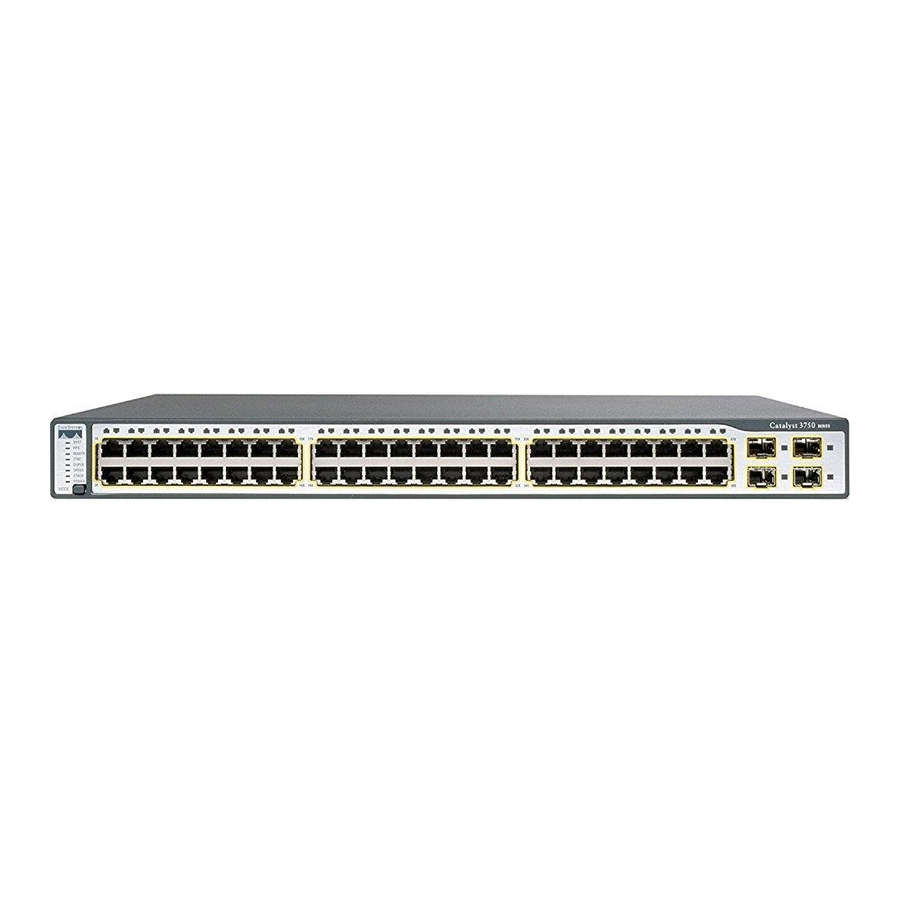Product Specifications
Table 1
Product Features and Benefits
Feature
Ease of Use and Deployment
Availability/Scalability
Superior Redundancy
for Fault Backup
All contents are Copyright © 1992–2004 Cisco Systems, Inc. All rights reserved. Important Notices and Privacy Statement.
Benefit
• Auto-configuration of new stack units eliminates reconfiguration.
• Dynamic Host Configuration Protocol (DHCP) auto-configuration of multiple
switches through a boot server eases switch deployment.
• Automatic Cisco IOS Software version checking and updating helps ensure that
all stack members have the same software version.
• Automatic QoS (AutoQoS) simplifies QoS configuration in voice-over-IP (VoIP)
networks by issuing interface and global switch commands to detect Cisco IP
phones, classify traffic, and enable egress queue configuration.
• Master configuration management ensures that all switches are automatically
upgraded when the master switch receives a new software version.
• Auto-sensing on each non-SFP port detects the speed of the attached device and
automatically configures the port for 10-, 100-, or 1000-Mbps operation, easing
switch deployment in mixed 10, 100, and 1000BASE-T environments.
• Auto-negotiating on all ports automatically selects half- or full-duplex
transmission mode to optimize bandwidth.
• Dynamic Trunking Protocol (DTP) enables dynamic trunk configuration across all
switch ports.
• Port Aggregation Protocol (PAgP) automates the creation of Cisco Fast
EtherChannel groups or Gigabit EtherChannel groups to link to another switch,
router, or server.
• Link Aggregation Control Protocol (LACP) allows the creation of Ethernet
channeling with devices that conform to IEEE 802.3ad. This feature is similar to
Cisco EtherChannel technology and PAgP.
• DHCP Relay allows a DHCP relay agent to broadcast DHCP requests to the
network DHCP server.
• IEEE 802.3z-compliant 1000BASE-SX, 1000BASE-LX/LH, 1000BASE-ZX,
1000BASE-T and CWDM physical interface support through a field-replaceable
SFP module provides unprecedented flexibility in switch deployment.
• To help ensure that the switch can be quickly connected to the network and can
pass traffic with minimal user intervention, there is a default configuration
stored in Flash.
• Auto-MDIX (media-dependent interface cross-over) automatically adjusts
transmit and receive pairs if an incorrect cable type (cross-over or
straight-through) is installed.
• 1:N master redundancy allows each stack member to serve as a master,
providing the highest reliability for forwarding.
• Cisco CrossStack UplinkFast (CSUF) technology provides increased redundancy
and network resiliency through fast spanning-tree convergence (less than 2
seconds) across a switch stack with Cisco StackWise Technology.
• Cross-Stack EtherChannel provides the ability to configure Cisco EtherChannel
technology across different members of the stack for high resiliency.
• IEEE 802.1w Rapid Spanning Tree Protocol (RSTP) provides rapid spanning-tree
convergence independent of spanning-tree timers and benefit of distributed
processing.
• Stacked units behave as a single spanning-tree node.
Cisco Systems, Inc.
Page 5 of 22

